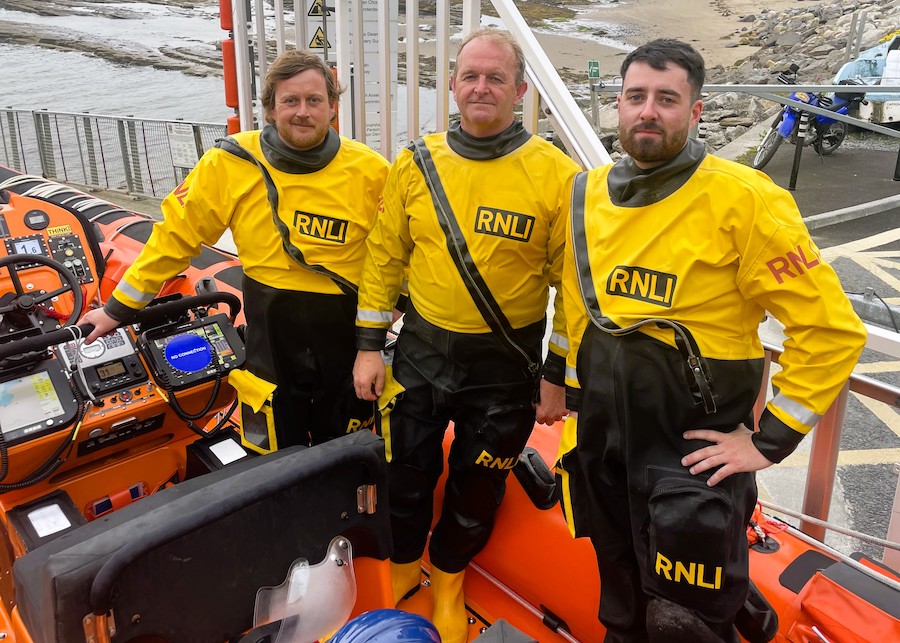RNLI Bundoran is celebrating the successful qualification of two volunteer crew members, Oisín Cassidy and Mark Vaughan, as Helms.
This achievement marks a significant step in their commitment to saving lives at sea, a fitting occasion to coincide with World Drowning Prevention Day on July 25th.
Both Mark and Oisín dedicated significant time and effort to training, successfully completing all aspects of the Helm assessment process to a high standard.
The rigorous qualification assessment adhered to the RNLI’s Operational Competency Framework (OCF), which includes a theoretical understanding of RNLI policies, procedures, guidance, and command responsibilities, alongside passing the IRPCS (International Regulations for Preventing Collisions at Sea) exam.
The practical assessment evaluated their skills in boat handling, search and rescue (SAR) scenarios, command navigation, emergency operating procedures (EOPs), anchoring, veering down, and communication under command.
Throughout the assessment, Oisín and Mark consistently displayed strong command skills and demonstrated comprehensive preparation for the demands of the Helm role.
Their success reflects their personal dedication, the invaluable support of their crewmates, and the station’s robust training environment. Special acknowledgment is given to RNLI Coastal Lifeboat Trainer Sean Ginnelly for his unwavering support and guidance during their training.
Shane O’Neill, Bundoran Lifeboat Training Coordinator, stated: “This is a truly positive accomplishment for the station. The qualification of two new Helms not only strengthens our operational capabilities but also underscores the continuity and leadership development within our crew. It highlights our commitment to excellence and strong training culture that we take pride in at Bundoran RNLI.”
The entire crew congratulates Oisin and Mark on their well-deserved achievement and eagerly anticipates their leadership on future callouts.
On this World Drowning Prevention Day, the RNLI emphasizes a crucial lifesaving technique: Float to Live.
To float effectively, tilt your head back so your ears are submerged. Focus on relaxing and breathing normally. Gently moving your hands and legs can help you stay afloat. Spread your arms and legs for increased stability – leg sinking is common, as buoyancy varies. Once your breathing is regulated, signal for help or swim to safety. Practice floating in a safe, supervised setting like a swimming pool.
Major milestone as two RNLI Bundoran volunteers qualify as Helms was last modified: July 25th, 2025 by


